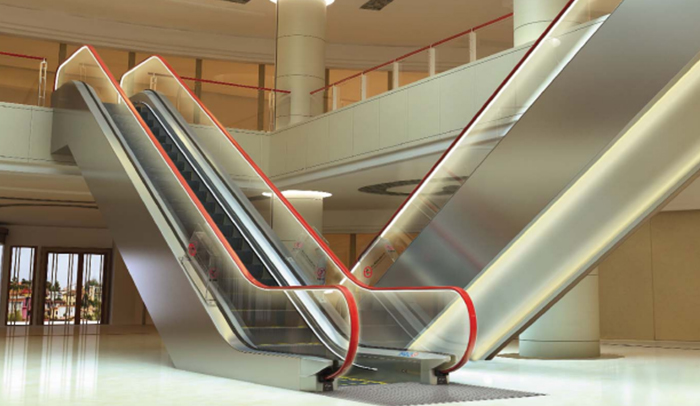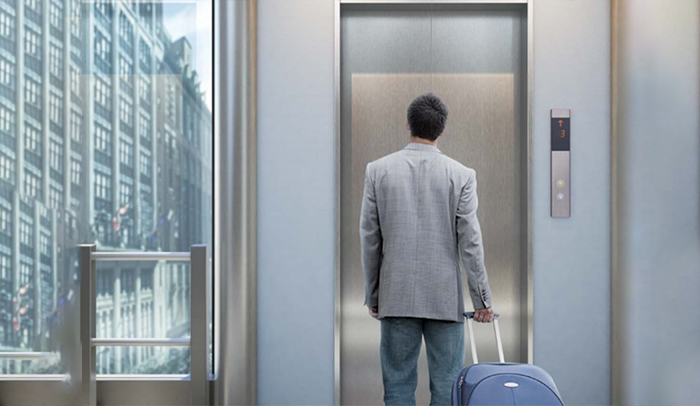
In every kind of environment, be it a restaurant, workplace, or even a cab you hail, there are certain etiquettes that everyone is expected to follow. Even elevators & escalators come with a certain set of etiquette and guidelines that one should abide by while using them. Following these etiquettes helps ensure comfort, safety, and easy mobility for all.
Today, elevators and escalators have become a common sight across several buildings in almost every city. But despite how common they have become today, many people still fail to follow proper ‘elevator and escalator etiquettes’, making the experience less likable for others.
So, if you find yourself about to take the escalator or elevator, here are some things that you would do well to remember:-

Walking up the escalator is very risky and can cause major injuries unless the safety protocols of using escalators are observed. Usually, children are taught to use the escalator safely, standing towards the centre of the step and always holding the hands of their parents. Also, there are people who may need to hold the handrail with their other hand for multiple reasons. In such cases, overtaking people or walking up on an escalator can lead to serious falls or injuries, which is why the etiquette that should ideally be observed while using an escalator is one where you avoid walking, running, or overtaking people on escalators, always.
Do not stand idly in front of the entrance or exit of an escalator. Doing so can cause extreme inconvenience to several people who want to use the escalator at that moment, and it may also cause several injuries. Additionally, if you are getting off an escalator, it is best to keep moving and to vacate the ‘landing area’ at the end of the escalator for ensuring a smooth experience for other people as well.
Lastly, it is important to ensure that children (and even some adults) know that escalators are not rides. They should not be going up and down an escalator again and again. It is something that’s very unsafe, and not to mention, annoying for others using the escalator.
If you are carrying any luggage or bulky items, it is important to ensure that they are not scattered everywhere but are placed close to you. Ensure that you do not let go of the luggage either, as it may end up toppling down, leading to injuries. Also, try to position the luggage in a way that allows for speedy movement once you reach the end of the escalator, so people behind you don’t end up crashing into you or your luggage.

When you get into a lift, do not press every button. Imagine a situation when you are the sole person in the lift and think it would be funny to press every button in a building with 25 floors. This means that the lift will stop at EVERY SINGLE FLOOR. Also, you are going to waste the time of other people who are going to get into the lift from other floors.
When getting on an elevator, a little bit of awareness can go a long way. When an elevator stops at the floor you are on, take a second to check the direction in which the elevator is going and get on only if you too are headed the same way. If you don’t do so, not only will it be frustrating for you, but you will also be unnecessarily crowding the elevator for others.
If people are trying to get out of the elevator, stand to the side as much as you can so that they can get out with ease. Remember to treat others the way you would like to be treated. Plus, after letting people get out, there will be more space in the elevator for you to get in. Similarly, if you are inside a crowded elevator near the door and someone needs to get off at a floor, courteously step outside, allowing them to get off the elevator, as this will help make this entire process more efficient and makes movement hassle-free for all. You can easily get back inside before the doors close.
Elevators have signs that inform you about their capacity in terms of the number of individuals and the weight they can carry. If you see that the elevator is almost full and there is no space for you or your group, then wait for the next elevator to arrive. Be patient and be safe.
These rules about good elevator & escalator etiquette are quite easy to follow but can help you avoid a lot of unpleasantness. Even though modern lifts and escalators transport passengers more comfortably and safely, every passenger must practice basic etiquette for ensuring a comfortable and safe experience for everyone.